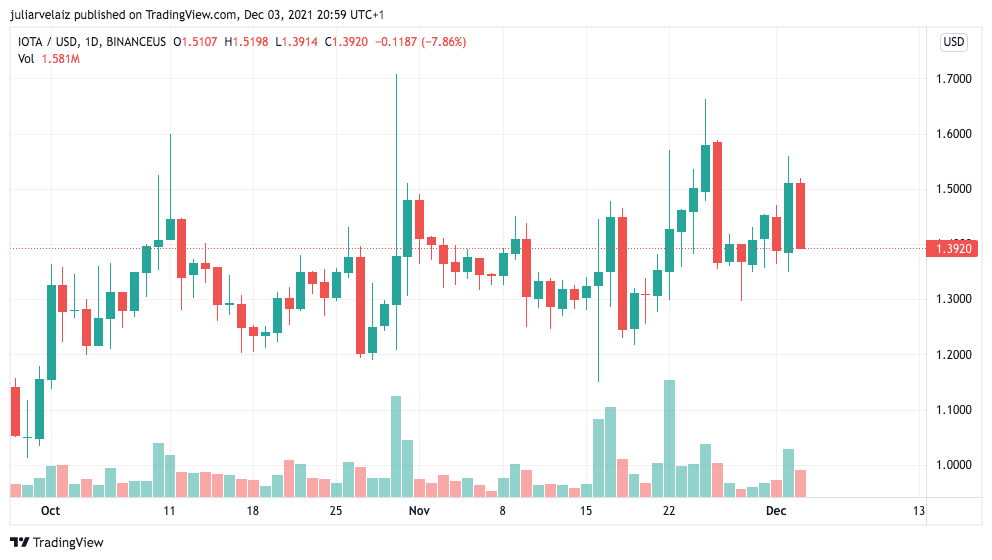The ledger IOTA aims to become “a fully decentralized, feeless multi-asset ledger” by launching Assembly in 2022, a governance layer one for permissionless smart contracts, along with the native token ASMB that will open the doors for the network’s main stakeholders, who would be democratizing Assembly.
IOTA’s founders say the ledger is a “public permission-less backbone for the Internet of Things that enables interoperability between multiple devices.” It aims to provide decentralized transactions accessible for everyone, without the need for miners or blocks, offering solutions for the cost fees, increasing scalability, and staying secure by using the Tangle network.
The Shimmer network, which was launched only two weeks ago, came with its token, which has real currency and is most likely to trade on crypto exchanges. Some users were skeptical about the need for Assembly. However, enthusiasts have been comparing it to an scalable Ethereum that doesn’t charge fees.
Although smart contracts can be run free of charge, it is possible to set a price for high computing power. In these cases, supply and demand will decide prices.
Smart contract chains can be fully run from Assembly’s own network, which is the reason for all activities to be anchored to the IOTA Tangle to provide trust by “making them fully immutable and secure”.
You may also like these related readings| IOTA Smart Contracts Enter Beta Phase To Circumvent Network Flaws
Tokens for Staking Of Assembly (ASMB).
Proof of stake also helps to build trust. Assembly is a distributed network. This means that there’s no central point to which a user can reach for assistance. Therefore, staking plays a role in building trust. The ASMB token allows users to stake to create a large community. Validators are members of this network who take care of safety and maintaining the network.
Validators who fail to follow the rules will be penalized. Validators also get more revenue from following the rules, in the form of additional tokens. All that is required to deploy smart contract chains or become a validator is to run a node or own “a small amount” of the ASMB token “to stake as a security deposit”.
ASMB token will have “70% going to the community”. In the beginning, tokens will be created during a 90-day period when users will be able to “stake IOTA tokens in order to earn ASMB tokens.” -by locking IOTA on the Firefly wallet-, then tokens will be able to get claimed for free, and there will be a period 2 years for users to get their staking rewards.
IOTA holders will receive 20% of the initial token supply. After that, the ASMB token distribution will take place over longer staking periods. Further information was available at Assemble described by Dominik Schiener, IOTA’s co-founder, as:
It is a fully distributed, unrestricted network. It’s an extension of the Smart ContractsFramework (live in Beta) adds validation pool, ASMB tokens, staking, and slashing. Anybody can build fully sharded smart-contract networks. AssemblyWhile enjoying the trustless, shared security and interoperability of this network, These fees are non-refundable transactions.
We are done with relays and bridges. We’re here to connect smart contracts. … What makes Assembly so unique is that you can customize fees and incentives.
He also stated the Assembly’s journey is only starting and they will be sharing more details on the Builders Program and the support that teams building on Assembly and IOTA will receive. “Hint: It involves a lot of financial support”, he said.
You may also like these related readings| IOTA could reach $1B in Tokens before Chrysalis 2.0
